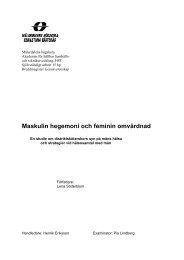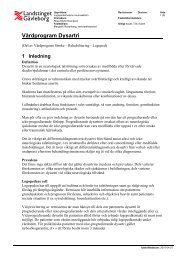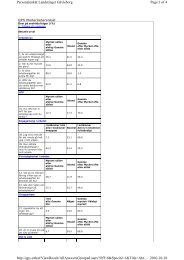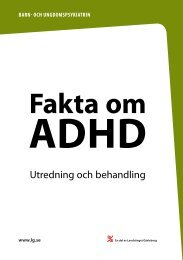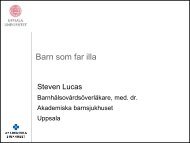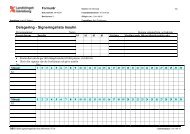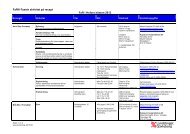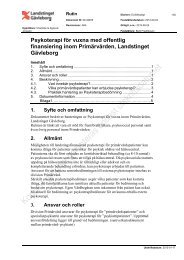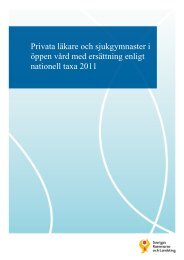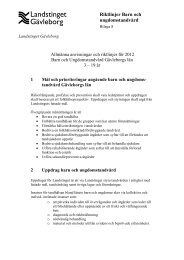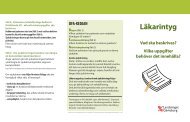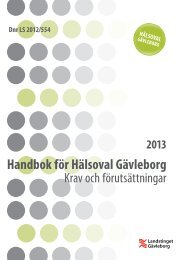Patientutbildning för personer med typ 2 diabetes. En kartläggning ...
Patientutbildning för personer med typ 2 diabetes. En kartläggning ...
Patientutbildning för personer med typ 2 diabetes. En kartläggning ...
You also want an ePaper? Increase the reach of your titles
YUMPU automatically turns print PDFs into web optimized ePapers that Google loves.
Abstract<br />
Patient education is an important part of the treatment in <strong>typ</strong>e 2 <strong>diabetes</strong>. Today there is no<br />
collected survey of patient education. The aim of the study was to survey how patient<br />
education for persons with <strong>typ</strong>e 2 <strong>diabetes</strong> was carried out within the primary care in Sweden<br />
and study if there was some relation between how patient education was carried out and<br />
persons' HbA1c, BMI and physical activates. Totally 684 health care centres participated.<br />
Data was received from a questionnaire and the national <strong>diabetes</strong> register that covered 91637<br />
patients with <strong>typ</strong>e 2 <strong>diabetes</strong>. Data was analyzed through qualitative content analysis and with<br />
multiple linear regression analysis. The result showed that most common form of education<br />
was “Patient education with a predestined content”, that was practiced individually in 362 of<br />
the health care centres, 108 of these also practiced complementary group education. “Patient<br />
education based on the patients needs” was carried out individually at 55 health care centres,<br />
12 were also carried out complementary group education. “Unspecified patient education”<br />
was practiced in 267 health care centres. A statistical significant relation was found indicating<br />
that patients receiving individual education based on the patient's needs HbA1c was lower<br />
(55 health care centres). The most common procedure was a checklist in which the care<br />
provider decided what the patient needed to know. Most of the care providers in patient<br />
education disregarded the patient’s needs and interest.<br />
Key words: Diabetes <strong>typ</strong>e 2, primary health care, patient education, survey, qualitative and<br />
quantitative study



